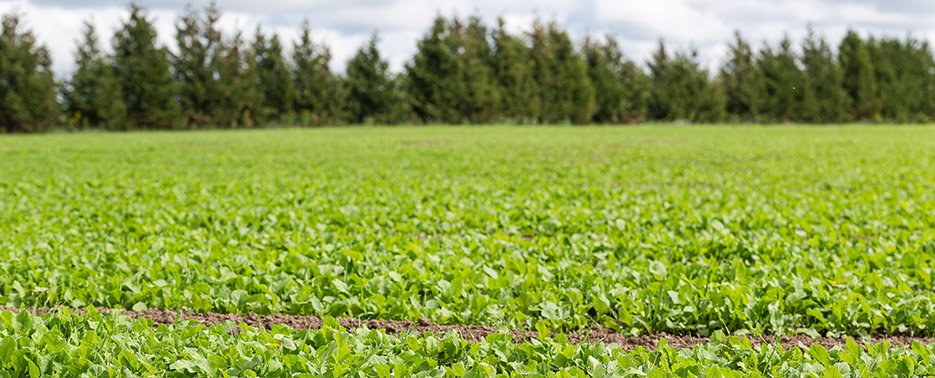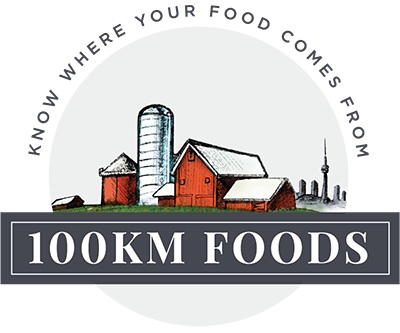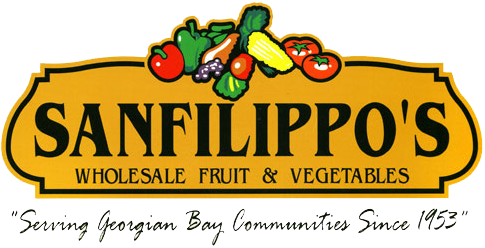Our products
The cool climate and sandy loam soils at the top of the Niagara Escarpment are ideal for growing premium quality greens. At The New Farm, we focus on producing the crops that grow best in our micro-climate. All our produce is grown using the full suite of regenerative practices, harvested to order, and shipped the day of harvest.
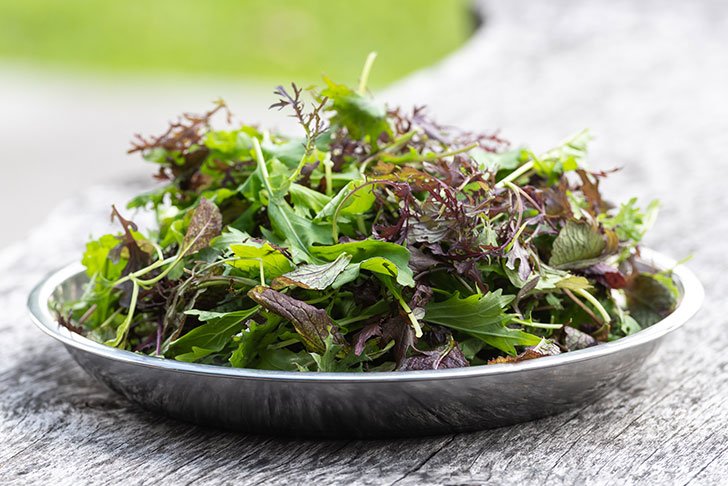
The New Farm is famous for premium quality salad greens. After testing hundreds of varieties and listening to years of feedback from our chefs, we have come up with what we think is the perfect combination of flavour, colour, texture and loft. We offer two different mixes, including spicy salad greens and premium salad mix, as well as baby leaf spinach, arugula, and Red Russian kale. All our greens are triple washed and ready to serve. Available mid-May to mid October.
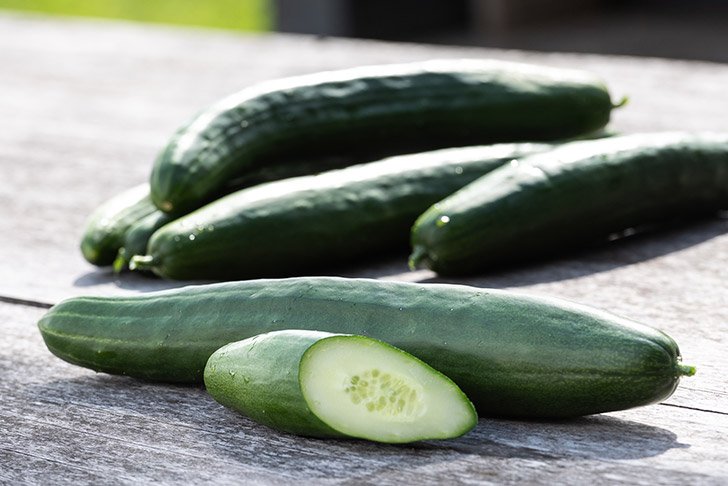
Our cukes are the only thing we grow indoors, in unheated high tunnels. The Japanese variety we grow is similar to traditional English varieties, with a thin, dark green skin and no seeds, but with noticeably better flavour, sweetness and crunch. Our cukes are hydro-cooled immediately after harvest and never waxed or plastic wrapped. Available late June to mid October.
How to order
We sell wholesale to restaurants, retail clients, and Good Food Organizations in Southern Ontario. Wholesale orders can be picked up on the farm or delivered through one of our distributors.
You can find our produce at Currie’s Farm Market in Collingwood and Foodland in Creemore. We do not sell from the farm.
The New Farm is committed to building the regenerative farming movement, and is Regenerative Organic Certified
Regenerative agriculture is a set of farming practices centred around building healthy farm ecosystems and resilient communities. Regenerative growing practices are a crucial means of mitigating climate change, increasing farms’ climate resilience, and improving farmer livelihoods.
Regenerative farming goes beyond sustainability to focus on how farmers can contribute positively to their land and communities by building soil health, supporting biodiversity, and cultivating resilient relationships. Regenerative agriculture is rooted in Indigenous wisdom and land stewardship practices, as well as in the work of Black agricultural scientist George Washington Carver and publisher and farmer Robert Rodale.
An ethical foundation
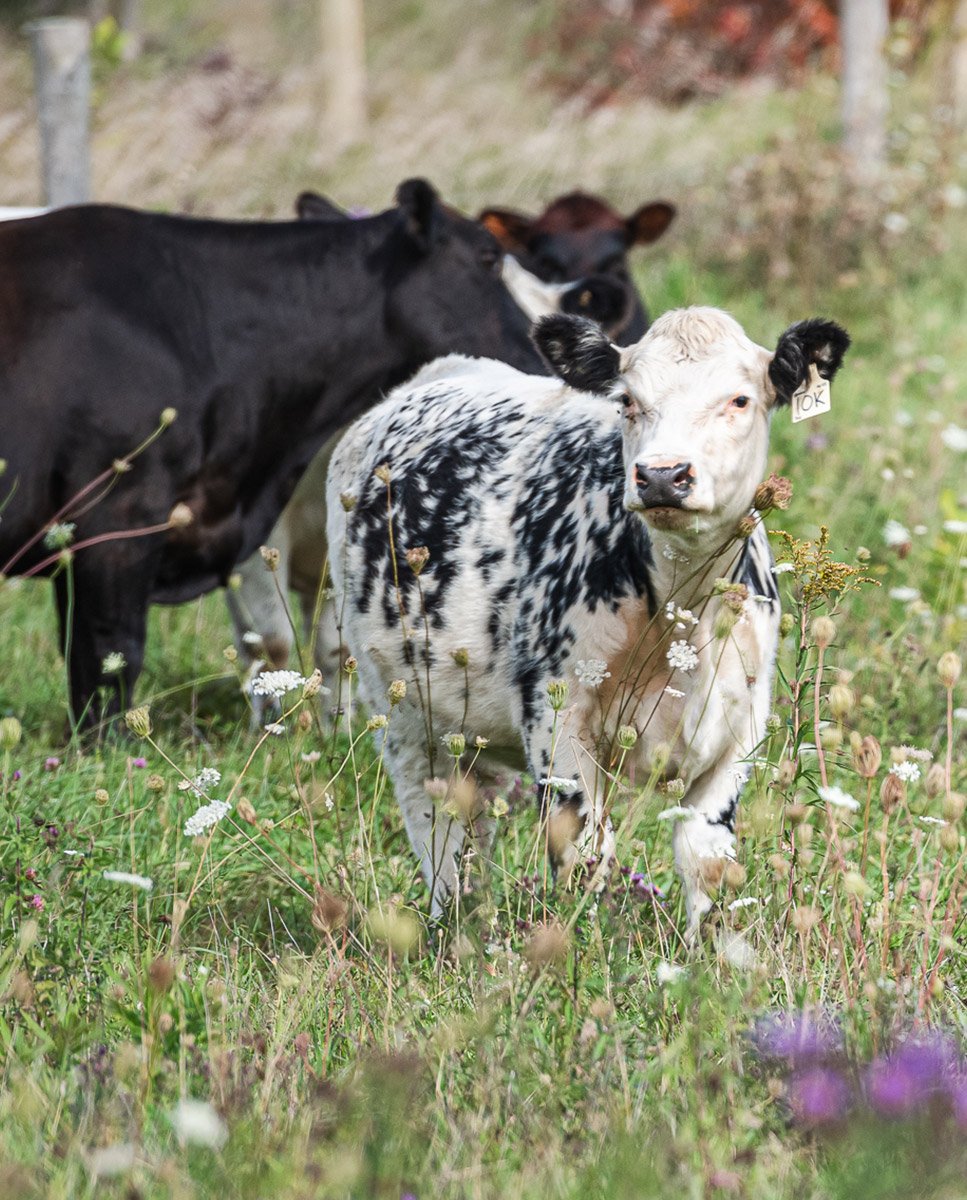
Regenerative agricultural practices are context-dependent. On our farm, they include cover cropping, diverse crop rotations, minimal tillage and integrated livestock.
In Regenerative Organic farming, there is zero use of persistent chemical pesticides or fertilizers. These practices build healthy soil, sequester carbon in the soil to mitigate climate change, and foster a climate-resilient and biodiverse farm ecosystem. Animal welfare, fair labour practices and healthy communities and economies are also bedrocks of the regenerative system.
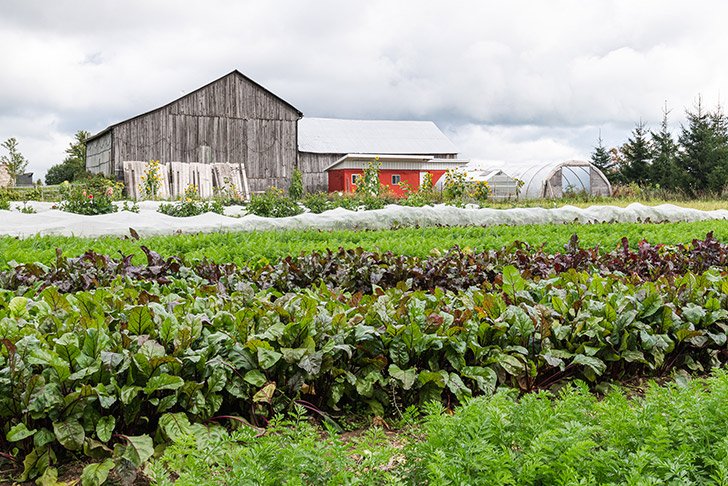

The New Farm is the first vegetable farm in Canada to be Regenerative Organic Certified, the highest standard of regenerative practice in the world.
What regeneration looks like on our farm

Grazing livestock
Animal integration is a core principle of regenerative agriculture. Though our main farm crops are salad greens and cucumbers, we have introduced a small herd of cattle, as well as pastured pigs and poultry. Animals help to manage our cover crops and to cycle nutrients on the land. Since introducing livestock, we’ve seen benefits including reduced tillage, effective management of cover crops, increased soil health, and reduced fossil fuel use.
Cover crops and minimal tillage
Cover cropping and minimal tillage help us build soil organic matter and healthy soils that retain rainwater and sequester carbon. This is key for climate change mitigation and increased climate resilience.
